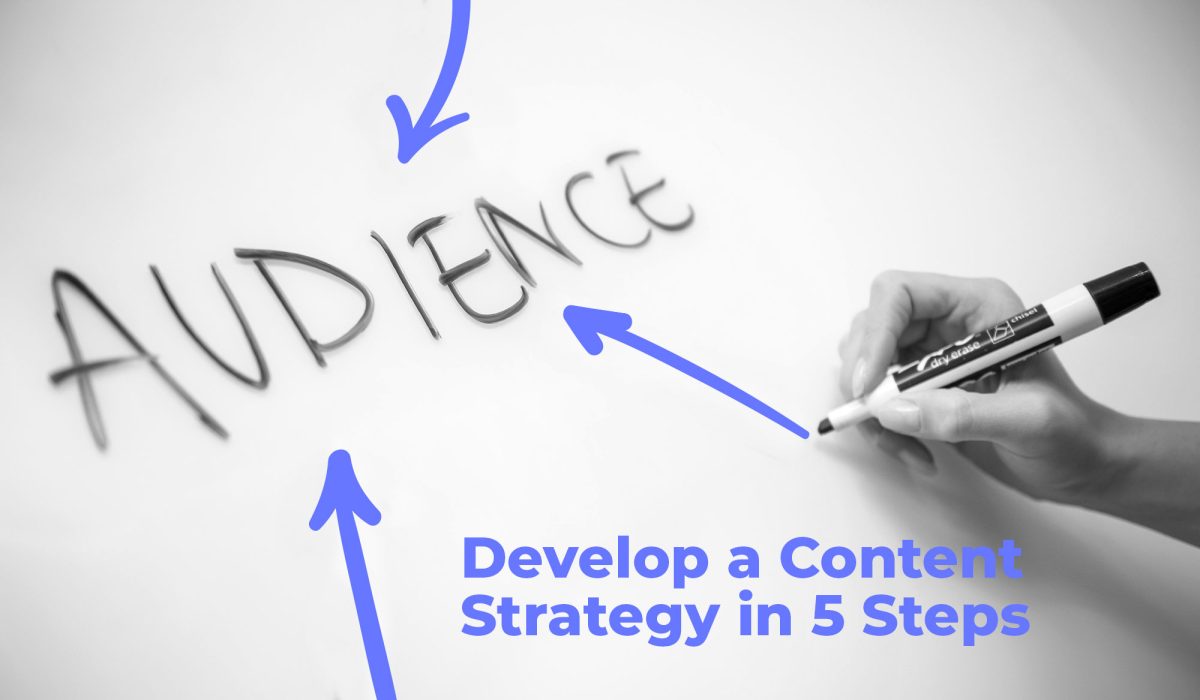Developing an effective content strategy can help you streamline your marketing efforts. In order to see results, you’ll need to do some research and constantly analyze and optimize your content strategy.
In this article, we’ll explain how to:
- Define your target audience
- Set goals
- Conduct a content audit
- Create a content calendar
- Measure and optimize
Define your target audience
Before you can create your content strategy, you need to know who you’ll be addressing. Identify your target audience and create buyer personas to understand their needs, interests, and pain points.
Once you do that, you can personalize your content, be it blogs, videos, infographics or more. This is how to do it.
Demographics
Gather information about your audience’s age, gender, income, education, and location. This is the base of your buyer persona. The majority of this information can be gathered from Google Analytics, social media analytics and from your customer support team.
If you want to create content, you need to know how to shape it to be engaging for your specific target audience.
Psychographics
Understand your audience’s interests, values, lifestyle, and personality traits.
This step will help you understand which topics to focus on in your content strategy. Do your consumers want to understand how to use your products and services or are they interested in your brand values?
Behavioural data
Analyze the behaviour of your current customers, such as how they interact with your brand and what they buy.
This information will help you understand how to create content for repeat customers, new customers and potential ones. You also need to know how to create a content strategy for every part of the sales funnel.
Surveys and focus groups
Ask your current customers for their input and feedback on your products or services. That’s the best way to create a successful content strategy.
Make sure your surveys are short. If you simply can not do that, then provide your customers with some type of reward if they complete the survey. Usually, the reward is a discount, a free sample or else.
Competitor research
Look at your competitors’ audience to understand the common characteristics of your industry’s target market.
You should know exactly why someone should choose you over your competitors. Maybe you’re the cheapest option, the option with the highest quality, the most sustainable option, etc.
Once you have a clear understanding of your audience, you can create buyer personas to represent different segments of your audience and tailor your content to their specific needs and interests.
Set goals
Determine what you want to achieve with your content, such as increasing brand awareness, driving website traffic, or generating leads.
Make sure your content strategy goals are specific. They should be specific, so you know exactly what you’re trying to achieve. For example, “increase website traffic by 20% in the next quarter” is more specific than “improve website traffic.”
Also, your goals should be measurable. Your goals should be quantifiable so you can track progress and measure success. For example, “generate 100 new leads per month” is more measurable than “increase lead generation.”
Your goals also need to be achievable. Make them realistic and achievable, given the resources and time you have available.
The content marketing strategy needs to have relevant goals. They should be relevant to your business objectives and align with your audience’s needs and interests.
Lastly, make them time-bound. Your goals should have a specific timeframe for achieving them, such as “increase email newsletter subscribers by 50% in the next 6 months.”
When setting your content goals, it is important to keep in mind that they will evolve over time. Continuously monitoring, measuring, and adjusting your goals as needed is important to make sure that your content strategy stays aligned with your overall business objectives.
Conduct a content audit
Review your existing content to identify gaps, opportunities for improvement, and what’s working well.
Gather all of your existing content
This includes website pages, blog posts, social media posts, email campaigns, and any other content you have created. Make sure you have Google Analytics data on every piece of content. Focus on the number of clicks, the session duration and the bounce rate.
Categorize your content
Once you have your content, organize it into categories, such as topic, format, and channel. This will help you see patterns and identify areas where you may need more or less content.
If you see that leads back out on the last step of the sales cycle, make sure you’re creating more content for those specific situations.
Evaluate the quality of your content
Assess the quality of your content based on factors such as accuracy, relevance, and engagement. Identify which pieces of content are performing well and which need improvement.
Identify gaps and opportunities
Look for areas where you may be missing out on opportunities to reach your target audience or where there are gaps in your content.
Make a plan for improvement
Based on your findings, make a plan for how to improve your content, including what types of content to create, how to optimize existing content, and which content to retire or update.
It’s important to conduct a content audit on a regular basis to keep track of your content’s performance and make adjustments as needed to ensure that your content strategy is aligned with your overall business objectives.
Create a content calendar
Plan out your content in advance, including topics, formats, and channels for distribution.
Since at this point you already know your target audience and what results you’re trying to achieve with your content marketing strategy, you should be able to create a detailed content strategy that explains how you’ll engage your audience.
Content creation shouldn’t be left to chance, so make sure you plan everything out before you start writing your blogs and filming your videos.
Measure and optimize
Optimizing your content strategy is an ongoing process that involves regularly reviewing and adjusting your content based on your goals, audience, and performance metrics.
Try different formats, topics, and calls to action to see which ones perform best. A/B testing can help you determine which headlines, images or CTAs are most effective.
Also, make sure you’re optimizing your content for search engines by using relevant keywords, meta tags, and alt tags. It will help your content to be easily discoverable by your potential audience.
By regularly optimizing your content strategy, you’ll be able to create more effective and engaging content that helps you achieve your business goals and connect with your target audience.
Key takeaways
Content marketing strategy is a must for any company looking to grow its business.
Use our guide to create useful content that is optimized for search engines and provides value to your customer pool.


